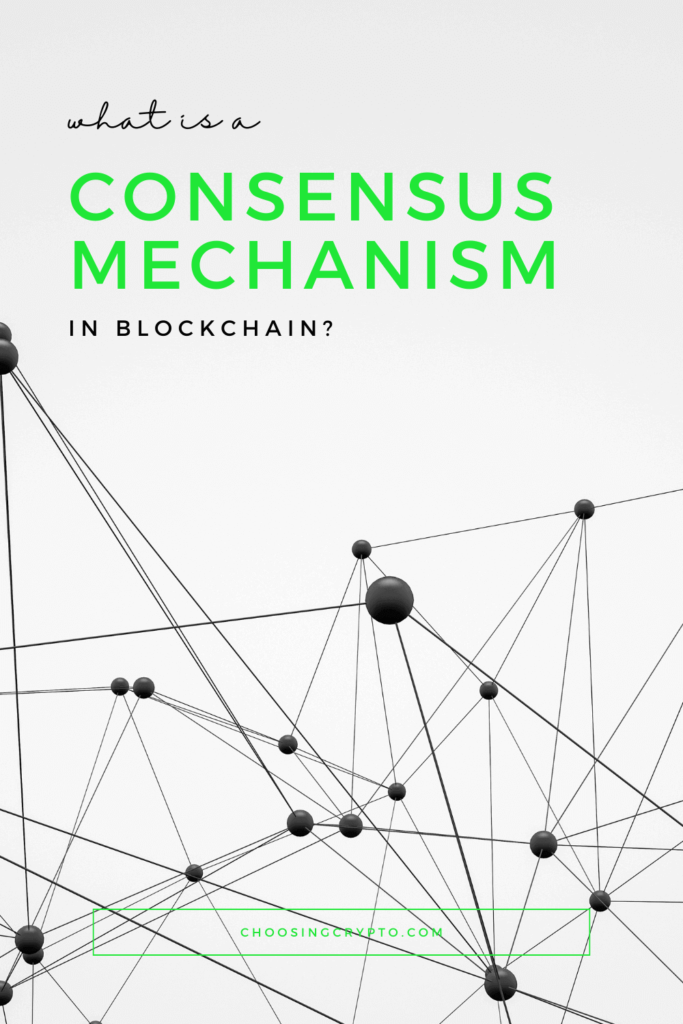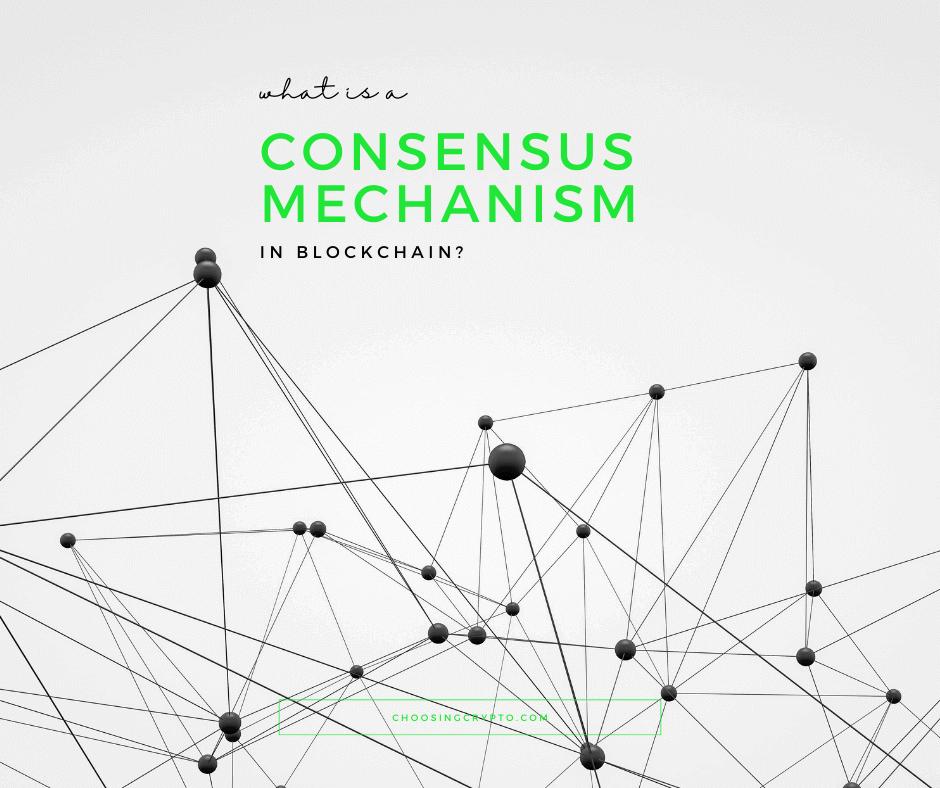What is a consensus mechanism in blockchain, and why does it matter?
Let’s break it down. Every time you make a Bitcoin transaction, a digital voting process happens behind the scenes.
Imagine this: computers all over the world are raising their hands to verify your transaction. Interesting, right? This is where consensus mechanisms come into play.
In this post, I’ll explain what a consensus mechanism is in blockchain, the different types, how they work, why they are vital for blockchain technology, and how they impact you.
Don’t worry, I’ll keep it simple and clear. By the end, you’ll understand how your favorite cryptocurrencies stay secure and trustworthy.
What is a Consensus Mechanism in Blockchain?
A consensus mechanism is a system in blockchain networks that checks and confirms transactions. It ensures they are genuine before adding them to the ledger.
All the computers (nodes) in the network must agree on each transaction’s authenticity and the blockchain’s current state. This agreement keeps the blockchain secure and trustworthy.
By reaching a consensus among nodes, the blockchain system maintains its integrity. This eliminates the need for a central authority and prevents fraudulent or incorrect transactions.
Consensus mechanisms are vital for blockchain integrity. They ensure the reliability of stored data. Without them, the whole system could collapse.
Why Do We Need Consensus Mechanisms?
You might be wondering why consensus mechanisms are so crucial in blockchain technology. Let’s break it down into simple points.
1. Building Trust Without Middlemen
In traditional systems, we rely on banks, governments, or companies to verify transactions. For example, when you transfer money from your bank to a friend, the bank ensures the transaction is legitimate. But what if we could cut out these middlemen and still maintain trust? That’s where consensus mechanisms come in. They allow users to trust each other directly, letting the blockchain operate without a central authority.
2. Ensuring Accuracy and Integrity
Imagine if anyone could add information to a blockchain without any checks. It would be chaotic, with false data, double-spending, or record manipulation. Consensus mechanisms solve this by requiring network participants to agree on each transaction’s validity before adding it to the blockchain. This keeps the data accurate and reliable.
3. Boosting Security
Consensus mechanisms are crucial for protecting the blockchain from attacks. Without a strong consensus mechanism, attackers could alter or create fraudulent transactions. Methods like Proof of Work (PoW) and Proof of Stake (PoS) make it hard and costly for bad actors to breach the system. This ensures that once a transaction is added to the blockchain, it can’t be easily changed or removed.
How Consensus Mechanisms Work
Let’s dive into how a consensus mechanism works:
- Proposal: A new transaction or a group of transactions is proposed to be added to the blockchain.
- Validation: The network participants, known as nodes, review these proposed transactions. They ensure the transactions follow the rules of the consensus mechanism and are legitimate.
- Agreement: Once the majority of nodes agree that the transactions are valid, consensus is reached. This can be done through a voting process or by solving complex mathematical problems, depending on the type of consensus mechanism.
- Addition to Blockchain: After reaching consensus, the new block of validated transactions is added to the blockchain. This block becomes a permanent, unchangeable part of the record.
In short, consensus mechanisms are like referees, ensuring everyone follows the rules and the system stays fair and secure. Without them, the blockchain couldn’t maintain its integrity and reliability.
Popular Consensus Mechanisms
Blockchain networks use different consensus mechanisms to establish agreement among participants. Here are some of the most well-known types, each with its unique methods and applications.
1. Proof of Work (PoW)
Proof of Work (PoW) is one of the earliest and most recognized consensus methods, famously used by Bitcoin. In PoW, participants called miners compete to solve complex mathematical problems. The first miner to solve the problem earns the right to add a new block to the blockchain and gets a reward.
Example:
Bitcoin is the most notable example of a blockchain using PoW. Miners worldwide use powerful computers to solve puzzles and ensure network security.
Pros:
- Security: PoW is highly secure because solving the puzzles requires substantial computational power, making it hard for any single entity to dominate the network.
- Proven Track Record: It has successfully secured Bitcoin since its inception.
Cons:
- Energy Consumption: PoW requires vast amounts of energy, raising environmental concerns.
- Scalability Issues: The process can be slow and inefficient, limiting the number of transactions the network can handle.
Read Also: Understanding Proof of Work (PoW) in Blockchain
2. Proof of Stake (PoS)
Proof of Stake (PoS) is an energy-efficient alternative to PoW. Instead of solving puzzles, participants known as validators are chosen to create new blocks based on the number of cryptocurrency tokens they hold and are willing to “stake” as collateral. The more tokens staked, the higher the chance of being selected to add a block.
Example:
Ethereum 2.0, the upgraded version of Ethereum, transitioned to PoS to improve scalability and reduce energy use.
Pros:
- Energy Efficiency: PoS uses significantly less energy compared to PoW.
- Scalability: It can handle more transactions per second, making the network faster and more efficient.
Cons:
- Wealth Concentration: Wealthier participants with more tokens might have more influence over the network.
- Complexity: PoS can be more complex to implement and understand than PoW.
Read Also: Proof of Stake (PoS) Explained: The Future of Blockchain
3. Delegated Proof of Stake (DPoS)
Delegated Proof of Stake (DPoS) is a variant of PoS where participants vote for a small group of delegates responsible for validating transactions and adding new blocks. This method aims to improve efficiency and scalability.
Example:
EOS uses DPoS to manage its blockchain network, relying on a set of elected delegates for system security.
Pros:
- Efficiency: DPoS can process transactions quickly and handle a high volume.
- Democratic: Participants influence who secures the network through voting.
Cons:
- Centralization Risk: The network may become centralized if only a few delegates are repeatedly chosen.
- Trust Issues: Participants must trust the elected delegates to act in the network’s best interest.
4. Proof of Authority (PoA)
Proof of Authority (PoA) assigns the role of validators to a selected group of participants deemed trustworthy with verified identities. These validators maintain the blockchain.
Example:
VeChain uses PoA to provide a secure and efficient network for its supply chain solutions.
Pros:
- Speed and Efficiency: PoA can handle transactions swiftly with low computational requirements.
- Low Energy Usage: It is more energy-efficient than both PoW and PoS.
Cons:
- Centralization: The system relies on a small number of validators, potentially leading to centralization.
- Trust Issues: Participants must trust the validators to act honestly and transparently.
5. Other Mechanisms
There are several other consensus mechanisms, including Proof of Burn, Proof of Space and Time, and Proof of Elapsed Time. Each one uses a unique method to reach consensus and ensure security. While these methods are less common, they offer innovative solutions to specific problems in blockchain technology.
How Consensus Mechanisms Impact You
Understanding consensus mechanisms isn’t just for tech geeks. They have a direct impact on your user experience. Here’s how:
- Transaction Speed: Different consensus mechanisms process transactions at varying speeds. Proof of Work (PoW) is slower because it requires solving complex puzzles. On the other hand, Proof of Stake (PoS) and Delegated Proof of Stake (DPoS) are faster and can handle more transactions per second.
- Transaction Costs: The cost of transactions changes with the consensus mechanism. PoW systems often have higher fees due to the significant energy and computational costs of mining. In contrast, PoS and DPoS usually have lower fees because they need less computational power and are more efficient.
- Fraud Protection: Consensus mechanisms are crucial for preventing fraud by verifying transactions. When you send cryptocurrency, the consensus mechanism ensures your transaction is verified and recorded accurately, reducing the risk of double-spending or tampering.
Additional Resources:
- Top Security Practices for Cryptocurrency Users
- Cryptocurrencies with the Fastest Transaction Speed
- Blockchain Basics: A Beginner’s Guide
- Debunking Common Myths and Misconceptions About Blockchain
- A Beginner’s Guide to Investing in Cryptocurrencies
And guess what? We’re also on Instagram and Twitter(X). Join us there for even more fun and useful content!

DISCLAIMER:
The information provided here is intended for informational purposes only and should not be solely relied upon for making investment decisions. It does not constitute financial, tax, legal, or accounting advice. Additionally, I strongly recommend that you only invest in cryptocurrency an amount you are comfortable with potentially losing temporarily.
